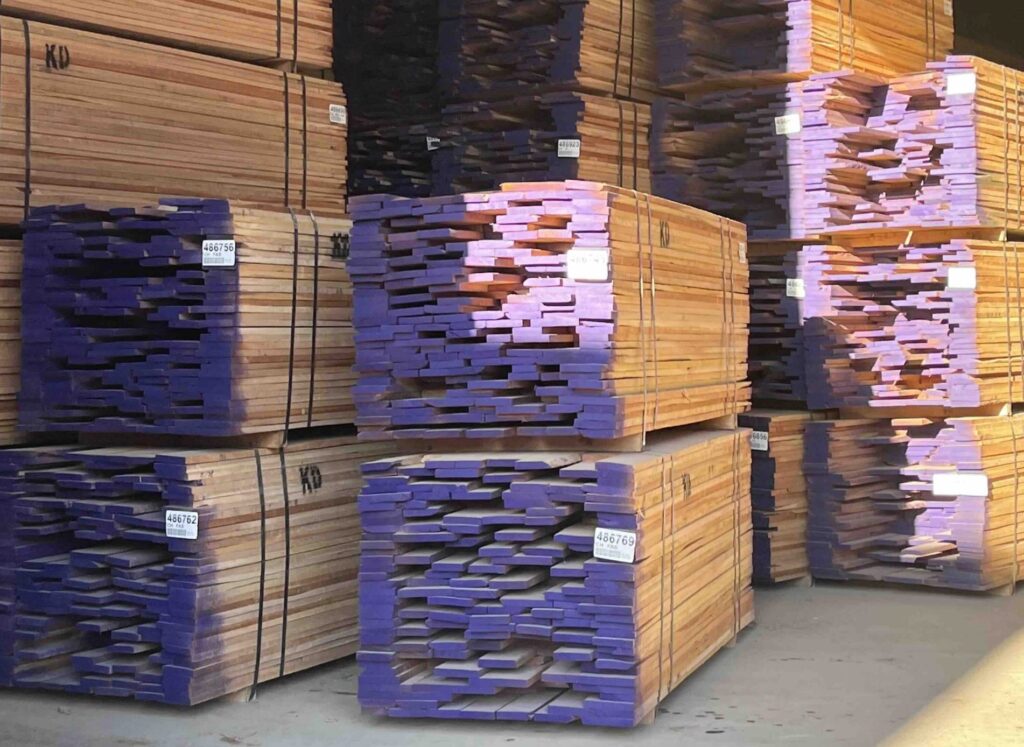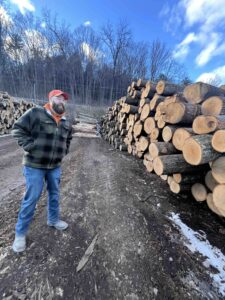Global Trade
HARDWOOD PRODUCERS BRACE FOR TARIFFS IN 2025

By Erin Kessler
On the international trade front, many in the forest products industry – hardwood producers in particular – are very concerned about what will happen with export markets as President-Elect Donald Trump takes office later this month. During his election campaign, Trump promised to impose tariffs of at least 60% on Chinese goods, 25% on Canada and Mexico, and 10-20% on other countries.
The last time Trump was in office, he imposed hefty tariffs on Chinese goods. China retaliated with their own tariffs on US hardwood products destined for markets there. A trade war between the United States and China ensued and between 2018 and 2020 retaliatory tariffs had devastating impacts on the industry; export demand plummeted almost overnight. At that time, China was (and still is) our largest export market, taking in about 50% of hardwood grade lumber from the US. Exports to China have since gone down about 50%, according to Dana Cole, executive director of the Hardwood Federation. “The drop-off has continued to today even though tariffs were taken off in 2020,” says Cole. This long-term impact on the hardwood industry and production levels, along with decreased domestic consumption of over the last several years, has put the hardwood industry on a rough road.
In Pennsylvania – a leading producer and exporter of hardwood lumber according to the Hardwoods Development Council of the state’s Department of Agriculture – many producers would love to see secondary manufacturing return to the US. But that probably isn’t realistic at this point as the US is and will continue to be part of the larger global economy.

As the owner of a logging company in northeastern Pennsylvania, Matt Carney cuts a lot of hardwood. He has two cut-to-length crews operating for his company, Elite Timber Harvesting, on different logging jobs at any given time, and sends logs to eight or more different markets. “The first time Trump was in office he said he was going to impose tariffs on China, so right away China put a 35% tariff on our oak. And, you know, we were struggling at that point. I was of the hopes that it would drive some manufacturing back to the States… It hasn’t.” Carney reminisces about the days when North Carolina used to be known for its furniture manufacturing and the longest haul was the mill down the road. “Wherever you logged there was a sawmill somewhere within 10 miles or so…” He says he doesn’t know if manufacturing of the previous scale will ever come back to the US. “Begrudgingly I am for the global markets, but in all reality, I would much rather have the secondary manufacturing here.”
Deer Park Lumber, a large hardwood mill in Pennsylvania’s Northern Tier, produces around 50,000 board feet per day, totaling 15 million board feet per year, according to their website. Currently, virtually 50% of their kiln-dried lumber is sent to clients overseas – a majority of those are in China, with a small number of clients in the EU and Vietnam.
On the day of my visit to Deer Park in early December, they were loading their eighth shipping container destined for China by 2 pm. A forklift operator was expertly sliding about 13,000 feet of kiln-dried cherry lumber into the container. “We’re getting ready for Chinese New Year,” says Sales Representative Joe Benko. It normally takes around 45 days for containers to land at Chinese ports. This year, Chinese New Year takes place between January 29 and February 3. “[Our clients] want it to land like February 5th. We are getting lucky right now because we found some slow ships that are going to get there around that time.” Benko says that the arrival of container trucks that week was helping them out, as their warehouse capacity is only 1.5 million feet, and they were already pushing that number.

When asked about the incoming administration’s plans to roll out new tariffs, Benko says that they are “keeping an eye on that.” Some of Deer Park’s customers are concerned. “They have been asking for more specific landing dates than they normally ask for after the New Year because they have a feeling tariffs could come into play on, let’s say February 15. Now, they’re kinda guessing, but I think in general the whole industry is nervous about tariffs... Low grade is low but grade lumber [pricing] also isn’t fantastic right now.”
The Hardwood Federation has also been watching closely and is in full preparation mode. The Federation, based in Washington, DC, represents over 30 hardwood trade organizations throughout the country, including the National Hardwood Lumber Association, the National Wood Flooring Association, NELA, and others, and regional and state forest products organizations like the major hardwood producers of New York and Pennsylvania.
Dana Cole of the Hardwood Federation says that the organization and its members are looking forward to seeing what kind of information they can provide to the new administration and to congress about the impacts of the first trade war. “Tariffs can be a powerful tool if used with a scalpel. When they are used like a sledgehammer the impacts are much less predictable and probably much less positive, at least for our sector,” says Cole. “I think the one silver lining in all of this is that we can get ready. We know the lay of the land and we know what will happen if certain policies are put in place and at the very least, we can get out in front of it and sound the warning bell a lot louder than we were able to last time.” Nobody knows what the new Trump administration will ultimately do. Right now, it’s all about educating the new administration about the hardwood industry.
Interested in more articles like this? Subscribe to the Northern Logger & Timber Processor.
